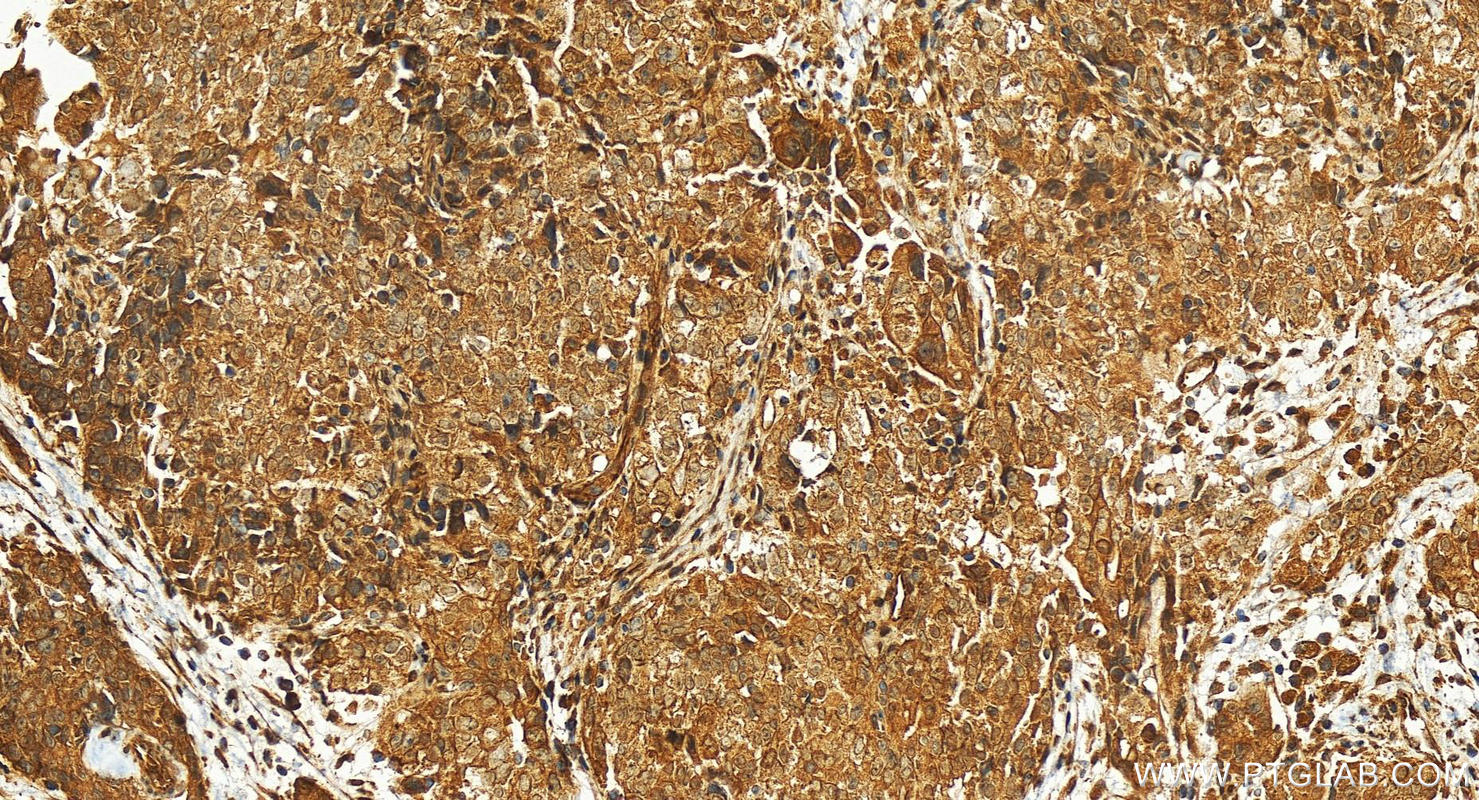验证数据展示
经过测试的应用
| Positive WB detected in | Neuro-2a cells |
| Positive IHC detected in | human ovary cancer tissue Note: suggested antigen retrieval with TE buffer pH 9.0; (*) Alternatively, antigen retrieval may be performed with citrate buffer pH 6.0 |
| Positive IF/ICC detected in | Neuro-2a cells |
推荐稀释比
| 应用 | 推荐稀释比 |
|---|---|
| Western Blot (WB) | WB : 1:2000-1:10000 |
| Immunohistochemistry (IHC) | IHC : 1:400-1:1600 |
| Immunofluorescence (IF)/ICC | IF/ICC : 1:200-1:800 |
| It is recommended that this reagent should be titrated in each testing system to obtain optimal results. | |
| Sample-dependent, Check data in validation data gallery. | |
产品信息
25141-1-AP targets UBXN2B in WB, IHC, IF/ICC, ELISA applications and shows reactivity with human, mouse samples.
| 经测试应用 | WB, IHC, IF/ICC, ELISA Application Description |
| 经测试反应性 | human, mouse |
| 免疫原 | UBXN2B fusion protein Ag18259 种属同源性预测 |
| 宿主/亚型 | Rabbit / IgG |
| 抗体类别 | Polyclonal |
| 产品类型 | Antibody |
| 全称 | UBX domain protein 2B |
| 别名 | UBX domain-containing protein 2B, p97 cofactor p37, NSFL1 cofactor p37 |
| 计算分子量 | 331 aa, 37 kDa |
| 观测分子量 | 37 kDa |
| GenBank蛋白编号 | BC113645 |
| 基因名称 | UBXN2B |
| Gene ID (NCBI) | 137886 |
| RRID | AB_3085772 |
| 偶联类型 | Unconjugated |
| 形式 | Liquid |
| 纯化方式 | Antigen affinity purification |
| UNIPROT ID | Q14CS0 |
| 储存缓冲液 | PBS with 0.02% sodium azide and 50% glycerol , pH 7.3 |
| 储存条件 | Store at -20°C. Stable for one year after shipment. Aliquoting is unnecessary for -20oC storage. |
背景介绍
UBXN2B, also called p37, is a cofactor of the p97 AAA ATPase. UBXN2B regulates spindle orientation during mitosis by limiting the levels of cortical NuMA (PMID: 29222185).
实验方案
| Product Specific Protocols | |
|---|---|
| WB protocol for UBXN2B antibody 25141-1-AP | Download protocol |
| IHC protocol for UBXN2B antibody 25141-1-AP | Download protocol |
| IF protocol for UBXN2B antibody 25141-1-AP | Download protocol |
| Standard Protocols | |
|---|---|
| Click here to view our Standard Protocols |


